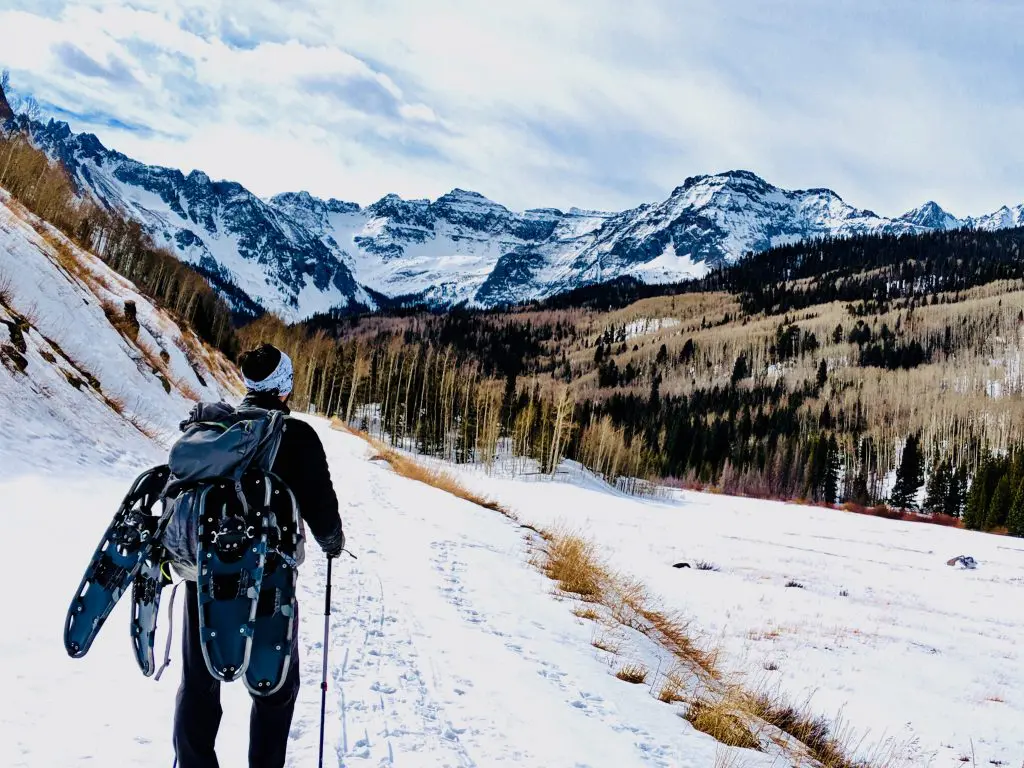At one time or another, you may have considered completing a thru-hike. Thru-hiking, however, is one of the most difficult and arduous hikes a hiker can complete. Traditionally defined as an end-to-end long distance trail hike with continuous footsteps in one direction, thru-hiking has grown more popular in recent years with the general push in reconnecting with the great outdoors.
Below, we are going to look at and discuss not only what a thru-hike is, but the best sleeping mats for thru-hiking. These sleeping mats will not only provide you with added padding and protection from the ground beneath you but will also provide you with additional warmth and insulation as you sleep.
What is Thru-Hiking?
In the United States, thru-hiking is generally defined as completing the entirety of the Appalachian Trail Conservancy (AT), the Pacific Crest Trail (PCT), or the Continental Divide Trail (CDT). However, in recent years more and more hikes have been added to the list of thru-hikes.
Outside of the United States, some additional thru-hikes include the Te Araroa in New Zealand, the Camino de Santiago in Spain, the Via Francigena in France and Italy, the Lycian Way in Turkey, and the Great Divide Trail (GDT) in Canada.
However, focusing on the United States, a thru-hike is generally defined as an end-to-end hiking trip on a long-distance trail. For instance, the Appalachian Trail Conservancy hike runs more than 2,100 miles from Georgia to Maine. Similarly, the Pacific Crest Trail runs more than 2,600 miles from Mexico to Canada.
And the Continental Divide Trail, even more difficultly, runs 3,100 miles along the crest of the Rocky Mountains. Remote, rugged, arduous, and difficult, thru-hiking is not recommended for amateur or inexperienced hikers. Rather, thru-hiking is more geared towards experienced hikers who have completed similarly arduous hikes.

What is the Purpose of a Thru-Hike?
Similar to the purpose of hiking in general, thru-hiking is oftentimes seen as the pinnacle of hiking excellence. For instance, more than 3,000 people attempt to complete the Appalachian Trail Conservancy hike per year, with only a quarter of those attempts being successful.
Due to its difficulty and arduous nature, thru-hiking is oftentimes seen as the final frontier for many experienced hikers. These hikers have completed arduous, long-term hiking and camping trips and are looking for a hike that will truly test their limits and abilities.
In a similar vein, the true allure of thru-hiking can be seen as the ultimate escape from the modern world. Due to its difficulty and long distance, a typical thru-hike can take up to five-months to complete. These months are spent away from civilization and hikers will typically be left to fend for themselves while out in the great outdoors.
Alternatives and Variations to a Traditional Thru-Hike
As a traditional thru-hike requires nearly five-months to complete, many hikers may simply not have that kind of time to commit. Therefore, alternatives and variations to the traditional thru-hike have emerged. Below are some useful variations you may consider.
In addition, these variations and alternatives may be a great choice as a means of practice before embarking on a traditional thru-hike. You will be able to get a better understanding and feel for what is needed for a complete thru-hike and will be able to better gauge your daily distance, stamina, and preparation.
- Pick a Shorter Trail – a trail like the John Muir Trail (215 miles), the Superior Hiking Trail (296 miles), or the Toiyabe Crest Trail (72 miles) are all great alternatives to traditional thru-hikes. These trails, while still difficult, can typically be completed in less than a month and will prepare you for completing a full thru-hike.
- Consider Section Hiking – similarly, you may opt to complete parts or sections of a traditional thru-hike. Rather than embarking on the full thru-hike, you can complete the trail in sections, returning periodically to continue from where you left off.
- Flip-Flop the Thru-Hike – lastly, consider completing the traditional thru-hike in bits and pieces. You can start at one part of the trail and come back to another part at your own discretion. Doing so allows you to get the feel of the full trail without having to commit to completing it at one go.

The Challenges of Thru-Hiking
In addition to the time commitment and arduous nature of a thru-hike, there are other challenges to consider before embarking on a thru-hike. It is important to take these challenges into consideration before planning a thru-hike and to ensure that you are fully prepared for the challenges ahead.
From a mental perspective, many thru-hikers are solo hikers. This means that they embark on the journey alone. And while the peace and quiet you’ll find through hiking alone can be beneficial, it can become quite difficult to continue through the loneliness and solitude for months on end.
And although you will likely run into other hikers while on your trip, you should still prepare yourself for the solo experience. Before embarking on a thru-hike, be sure to complete a few solo hikes to ensure you are comfortable completing a hike alone.
Furthermore, from a mental perspective, be sure to be comfortable with leaving family, friends, and loved ones behind for months on end. As many thru-hikers complete the hike alone, you will have limited contact to family and friends and will need to be comfortable without their presence.
Similarly, a thru-hike is extremely physically challenging. With thousands of miles of hiking and countless feet of elevation, you will be physically exhausted at the end of your hike. Be sure to be in peak physical condition before embarking on a thru-hike and ensure that you understand the requirements needed before planning your trip.
Lastly, there are financial challenges to consider. As a traditional thru-hike requires nearly five-months to complete, you’ll likely be out of work for that time period. In addition, you will need to purchase and prepare for your trip, which can cost as little as $1 a mile or upwards of $4 a mile for a no expenses spared budget.

General Gear Considerations for a Thru-Hike
Gear is one of the most important aspects of a thru-hike. However, unlike a more traditional hike, the gear you bring with you on a hike needs to be purposeful. Remove any frivolous and unnecessary items, which will only add weight to your pack and lead to fatigue.
- The more lightweight, the better. As you will be trekking several thousands of miles, you should look to invest in gear that is lightweight and durable. Avoid extra poundage and reduce the overall stress and toll from heavy gear.
- Invest in robust gear that won’t rip or tear. As you will be out in the great outdoors alone, you will rely on your gear for protection. You don’t want to get stuck with a ripped tent or a sleeping bag with a hole in it.
- Pack for the season. If you are planning on completing a thru-hike during the warmer months, then pack accordingly. Similarly, if you are planning on completing a thru-hike during the winter or colder months, be sure to invest in gear that will keep you warm and insulated.
How to Choose a Sleeping Mat for Thru-Hiking
Sleeping mats or pads play an important role in getting a good night’s sleep while hiking and camping in the great outdoors. Both cushioning and insulation are added benefits which are provided from a proper sleeping mat and can help you to be more rested for the challenges of the upcoming day.
However, before purchasing a sleeping mat or pad, there are some careful factors to consider.
Firstly, there are the different types of sleeping mats available on the market. From air pads to self-inflating pads, to closed-cell foam camping mats, below we will discuss the pros and cons of each.
- Air Pads – air pads come in a wide range of styles, from lightweight ones to extra-thick ones, most air pads contain insulation or reflective material which helps increase warmth.
- Pros – air pads are extremely comfortable and lightweight. They are also the most compact type of pad on the market when packed. In addition, air pads can be customized by adding or releasing air from the valves.
- Cons – air pads can become costly, especially for ones which are lighter and more compact. In addition, they can be easily ripped. Lastly, air pads tend to feel like they are losing air while sleeping on, especially if the outside temperature fluctuates.
- Self-Inflating Pads – self-inflating pads are a combination of open-cell foam and air insulation. When you open the valve, the foam begins to expand and brings air in automatically.
- Pros – self-inflating pads are extremely comfortable and offer excellent insulation. In addition, you can adjust the firmness of the pad by adding or releasing air.
- Cons – self-inflating pads are generally heavier than air pads. As such, they are also oftentimes more expensive. In addition, they are typically not as compact as air pads and require more work to pack away.
- Closed-Cell Foam Camping Mats – the traditional camping mat, these mats are made of dense foam filled with tiny, closed air cells. Extremely simple and basic, most campers and hikers invest in a closed-cell foam camping mat when they first begin their hiking journey.
- Pros – lightweight, inexpensive, durable, and portable, the closed-cell foam camping mat can be easily folded and requires little to no additional prep before use.
- Cons – extremely basic, closed-cell foam camping mats offer less protection against the ground and are not customizable once purchased. In addition, closed-cell foam camping mats are a bit stiff and can be bulky the first few uses.

Sleeping Mat Insulation and R-Value
Although most hikers and campers believe that a sleeping mats primary purpose is to protect against the hard ground, they also double as a great form of insulation. A sleeping mats insulation is crucial to a good night’s sleep due to the loss of heat from the cold ground beneath you.
To counteract the cold ground, sleeping mat manufacturers utilize a variety of materials to prevent heat loss.
The capacity to resist heat flow is measured through a sleeping mats R-value. The higher the R-value, the better and more fully it will insulate you from a cold surface. Ranging from 2 to 5.5, the higher the number, the better and more insulating the sleeping mat.
When considering a sleeping mats R-value, you should also take into consideration the value and rating of the sleeping bag you will be using. Sleeping mats and sleeping bags go hand-in-hand and higher R-values for both will keep you warmer and better insulated.
Additional Sleeping Mat Considerations
- Sleeping mat weight is, perhaps, the most important consideration for thru-hiking. Although ultralight pads and mats are better for thru-hikes, they are generally more expensive. If costs are a concern, definitely consider a closed-cell foam mat as they are generally cheaper. In addition, if you are completing a thru-hike with another hiker, consider investing in a two-person sleeping mat, which can help you save on overall weight.
- Sleeping pad width and length are also other important factors to consider. At a minimum, you will need to purchase a mat which covers your shoulders and hips. In addition, if you tend to move around a lot while sleeping, consider purchasing a sleeping mat with a width between 25-30 inches.
- Lastly, sleeping mats come in a variety of different surfaces. Depending on personal preference, you may want to invest in a textured or brushed-fabric mat surface for added comfort.
Personal Recommendation on the Best Sleeping Mats for Thru-Hiking
While we, personally, have never completed a thru-hike, we have completed long-term hikes and camping trips. During these stays, we’ve used some of the below sleeping mats and wholeheartedly recommend them for any thru-hikes or long-term, long-distance hikes and camping trips.
Big Agnes Air Core Ultra Sleeping Pad
Our editor’s recommendation for the best sleeping mat for thru-hiking is none other than the Big Agnes Air Core Ultra Sleeping Pad.
A light, insulate, and compact sleeping mat, with a smooth sleeping surface, the Big Agnes Air Core is extremely comfortable and rated with a 4.5 R-value.
The thermolite insulation works with a heat reflective barrier to better trap body heat and reflect it back onto your body, keeping you warm and comfortable in nearly any weather condition. As a three-season sleeping mat, the Big Agnes will keep your body warm and comfortable from the hard, cold ground beneath you.
The Big Agnes is built with a durable, lightweight nylon double rip-stop fabric. This means that not only is the Big Agnes extremely lightweight, but it will last through multiple uses and will be able to withstand the treacherous terrain you will face while thru-hiking.
Wakeman Foam Sleeping Pad
If you’re looking for something a bit simpler, and cheaper, then we highly recommend the Wakeman Foam Sleeping Pad. Coming in either black or blue, this sleeping pad is 1.25” thick and made of premium foam material, offering superior comfort, and helping you get a restful night’s sleep. And at 76-inches long, you will have more than enough room to fit on this sleeping pad.
Lightweight and extremely durable, the Wakeman Foam Sleeping Pad is a perfect, basic alternative to more advanced sleeping mats. Our only gripe with the Wakeman Foam Sleeping Pad is that it can get quite bulky and may be difficult to pack. However, once we got the hang of it, it was much easier to roll up and strap along to our hiking backpack.
Therm-a-Rest NeoAir XTherm Ultralight Sleeping Mat
Our go-to for colder weather hiking and camping, the Therm-a-Rest NeoAir XTherm Ultralight Sleeping Mat is rated with a 6.9 R-value, meaning it is one of the warmest sleeping mats available on the market. And if you are going thru-hiking during the colder months, then we would highly, highly recommend you invest in one with a higher R-value rating.
And according to Therm-a-Rest, the XTherm offers the most warmth-per-ounce of any lightweight sleeping pad for hikers. Made in the United States, the XTherm has a patented triangular core matrix technology which utilizes two stacked layers of triangular baffles to create a stable surface for you to sleep on. In addition, this triangular design helps to reduce heat loss.
And with ThermaCapture, an innovative, proprietary technology material, you will be better able to reflect radiant heat and minimize heat loss, without having to add extra weight or bulk. A great sleeping pad or mat for thru-hiking but definitely one that should be invested in if you are planning on completing the hike during the colder months.
